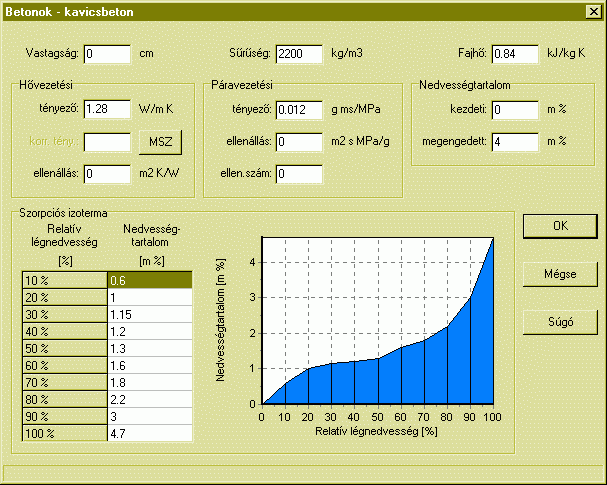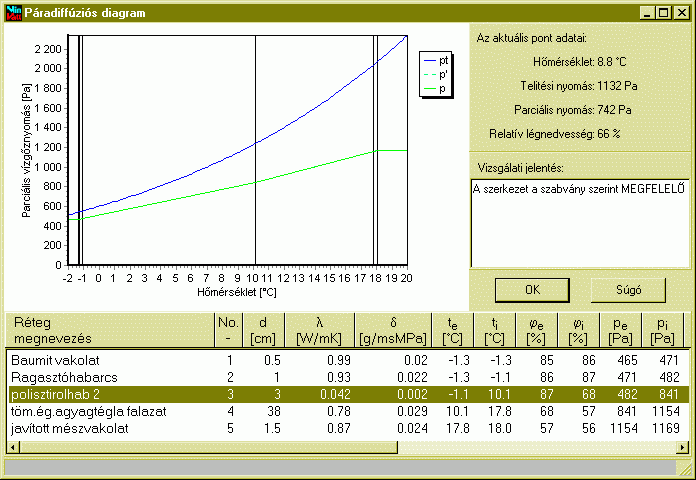WinWatt building physics
|
The following versions of the WinWatt heating package include the building physics module
|
|
Material database
A structured, fundamentally uploaded but user-expandable material database helps structure layers. A dialog for entering or modifying the substance data is available. The materials are stored in a database, independent of the projects.The material supplied with the program was uploaded using the following resources:
- M.1 in the appendix to standard MSZ-04-140-2: 1991. and M.3.4 table for sorption isotherms
- István Völgyes: Fűtéstechnikai adatok 1st and 2nd editions. Műszaki Könyvkiadó, Budapest, 1978 ill. 1989.
An example of entering data is the screenshot below.

Layered structures
The user can easily enter data for each layer of a multilayer
structure using simple tools. You do not need to specify material
properties anymore as the materials can be selected from the database.
In addition to changing the layer thickness, it is possible to move,
replace, insert and delete layers.
Air layers and vented layers can also be specified.
Building physics calculations are based on the current MSZ-04-140-2: 1991 standard, and the following calculations are performed:
- heat transfer coefficient
- damping factor
- specific wall mass
- specific mass of heat storage
- floor heat absorption coefficient (for floors and ceilings)
- construction of vapor diffusion diagram, determination of equilibrium moisture content
The structure is evaluated based on the moisture content of the vapor diffusion calculations. The tests aim to determine the equilibrium moisture content, or, in more complex cases, the possibility of equilibrium moisture formation using the algorithm provided in the appendix to the standard. If the initial moisture content makes this necessary, the program also performs an approximate dehydration test. Based on these results, the program qualifies the structure.

Energy control of a building
Based on the winter heat demand calculation, the program determines the specific heat flux per unit heated volume of the building and the unit (inside-outside) temperature difference, and checks whether the building is below its maximum according to the use of the building.
Last modify: 11 September 2019







